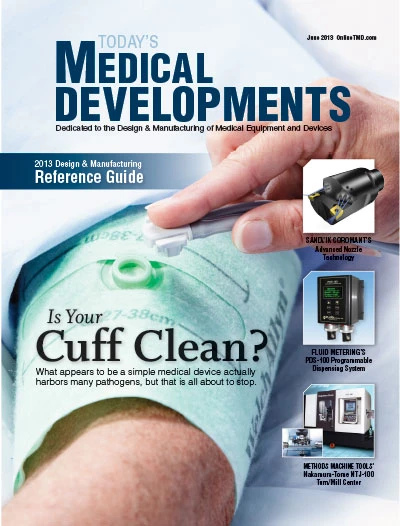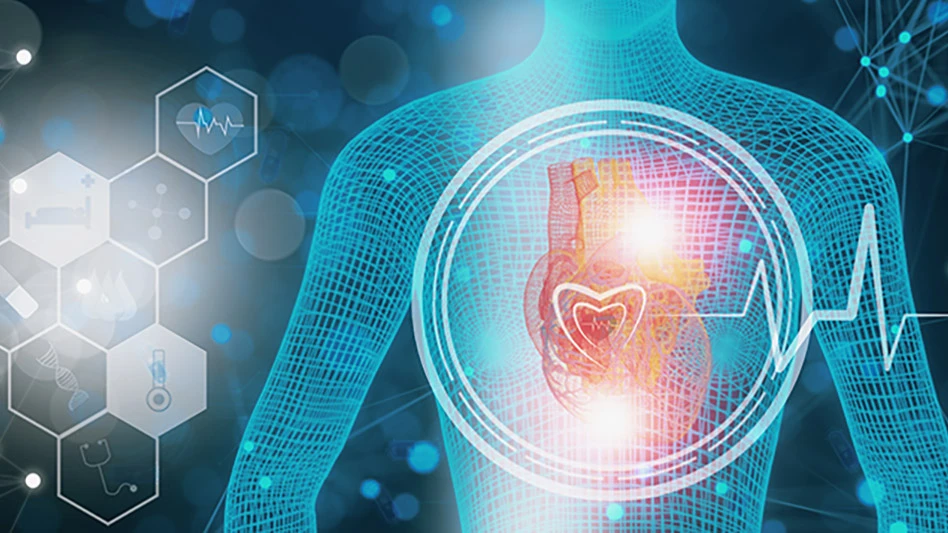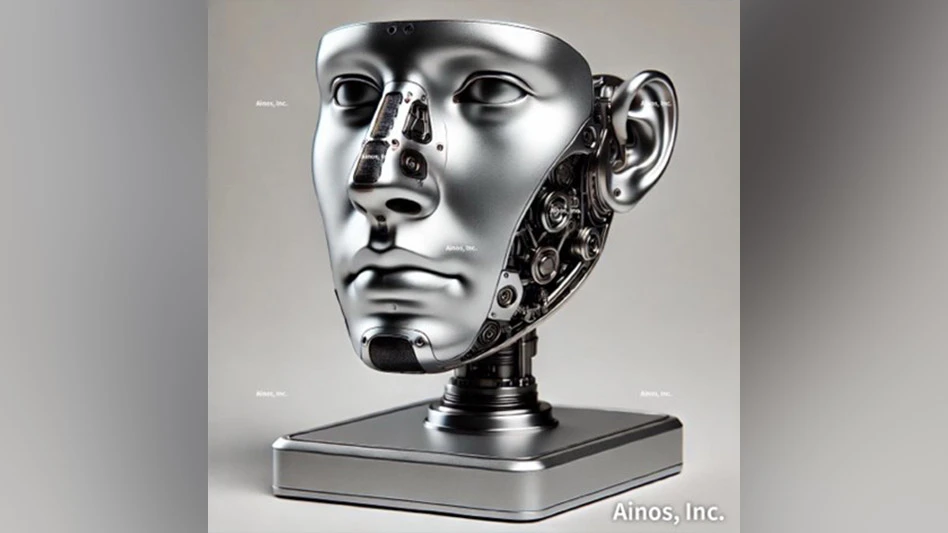 The end application of the medical device will determine the appropriate antimicrobial efficacy testing requirements. |
The statistics are alarming: In 2002, the estimated number of HAIs (healthcare acquired infections) in U.S. hospitals, adjusted to include federal facilities, was approximately 1.7 million, and estimated deaths associated with HAIs in U.S. hospitals were 98,9871. And, according to a March 2009 report from the Centers for Disease Control (CDC), the overall annual direct medical costs of HAI to U.S. hospitals ranges from $28.4 billion to $33.8 billion2.
While the rate and impact of healthcare acquired infections has been tracked by the CDC in the U.S. and similar organizations around the world for decades, the focus on preventing these infections gained significant momentum in July 2008, when the Steering Committee for the Prevention of Healthcare-Associated Infections was created under the auspices of the U.S. Department of Health and Human Services (HHS). The group released an initial action plan in 20093, focused on prevention in acute care hospitals. This plan was expanded to then include ambulatory surgical centers and end-stage renal disease facilities. In April 2011, HHS launched the Partnership for Patients, with the goal of decreasing HAIs by 40% compared with 2010 rates, resulting in 1.8 million fewer injuries to patients and more than 60,000 lives saved over the next three years.
Ten key strategies were outlined in the Partnership plan to prevent and eventually eliminate HAIs, engaging frontline clinicians, healthcare executives and administrators, clinical leaders, advocates, and the government. Among the strategies are those that focus on research, reporting, and metrics and the tools to support them; outreach and education; and incentives and oversight.
Value-based purchasing programs and other financial incentives are part of the plan to encourage reporting and reducing HAIs. For example, the Hospital-Acquired Conditions provision is a Medicare statute that requires the Centers for Medicare and Medicaid Services (CMS) to ensure that conditions acquired in hospitals do not generate higher payments than the hospitals would normally receive for cases without these conditions. And, beginning in 2015, CMS will reduce payment for patients discharged for hospital-acquired infections.
With a concerted focus, clinically and financially, on reducing HAIs, the value-adding delivery chain, which includes OEMs of medical devices and equipment, and their suppliers have joined the fight.
SABIC is focused on providing solutions to medical device OEMs by targeting a broad set of approaches that can be used to fight HAIs. As a first line of defense, healthcare service providers are putting great emphasis on hygiene within the patient care setting. This encompasses hygiene of caregivers (i.e. robust hand washing, etc.), adherence to aseptic care delivery through training and oversight, as well as meticulous control through cleaning and sterilization of reusable patient interfaces (monitors, furniture, and other patient contact surfaces).
On this front, the efforts to improve the overall cleanliness of the patient care setting will result in more advanced performance requirements from the materials in these patient devices. To meet these requirements, engineered thermoplastics with improved chemical resistance to a number of stringent disinfectants must be considered in the design and construction of medical devices in the future. Generally, chemical resistance is impacted by both the morphology of the polymeric resin as well as the plastic molding process related to residual stresses in a molded component. Chemical resistance is generally improved for materials with higher degrees of crystallinity and lower residual stress post molding. Designers should seek resins with both flowability and significant tolerances related to chemical resistance in order to achieve an optimal balance of properties and performance, given the changing landscape related to resistance to aggressive cleaning agents used today in patient care environments.
Additionally, changes in sterilization regulations is leading to the emergence of new techniques to improve clinical productivity, as well as to mitigate potential infection to patients, which is another emerging challenge for OEMs. To that end, thermoplastics must meet evolving requirements related to the temperatures used in autoclave cycles, as well as increasing demands to withstand sterilization methods derived from electromagnetic radiation sources (gamma and e-beam). Specialty engineered resins (such as polycarbonate-based resins) are available to meet such challenges. Also, new sterilization techniques using low-temperature, hydrogen peroxide gas are gaining popularity for use in hospitals due to their ease of use and productivity. These new methods require materials that can withstand the conditions and still maintain device usefulness after hundreds of cycles. In such environments, high performance materials are available that have shown superior performance (most notably, retention of ductility and aesthetics) in low-temperature, hydrogen peroxide sterilization environments4. These high-performance thermoplastics are often used in sterilizable surgical instrument trays and other devices – such as staplers, surgical instruments, etc. – that are commonly used in surgical procedures.
Building in Antimicrobial Performance
While efforts to improve infection control in the clinical setting are a prime area of focus, medical device OEMs recognize that design features and inherent material properties are needed in the most invasive devices, which present their own sets of challenges to minimize infection risk. Many devices currently utilize an inherent antimicrobial material approach to provide added performance to address infection risks to patients. Devices, such as in-dwelling urinary or vascular access catheters, wound dressings, IV components, durable medical equipment, and implantable devices, are currently marketed by leading OEMs with properties to minimize the risk of infection. These products typically employ one or more active species either as a coating or within the matrix of the material, which leaches to the device surface to help prevent microbe colonization and biofilm formation. The prevention of biofilm formation is the key performance objective with antimicrobial medical devices, because if it does form, the treatment options are more severe and costly, and come with additional risks to the patient. Some common active agents used in medical devices today include silver additives, antibiotics, chlorhexidine and surface active, functionalized polymers, among other potential approaches. These are sometimes used together to achieve synergistic enhancements to resist biofilm development.
Silver additives have gained rapid acceptance as an effective approach to imparting antimicrobial activity to materials due to its performance at relatively low concentrations, its low human toxicity, and its ability to migrate in sufficient concentrations to surfaces. Silver is therefore perhaps the most widely used antimicrobial additive for compounded thermoplastic materials. Other additives, both metals and organics, are also being used. Amongst other metals, there have been some examples of copper being used for thermoplastics, but mostly as a copper alloy coating on plastic surfaces. We have not seen examples of copper being compounded in thermoplastics yet. Organic additives such as biocides are widely used in both water and solvent based coatings. However, the use of such additives in extruded or injection-molded thermoplastics is difficult because of their thermal instability at their optimal processing temperatures. Recently, some silane-based technologies have been developed that can withstand the high processing temperatures, even up to 600°F. This will certainly make such additives more versatile for a wide range of thermoplastic resins.
 With a concerted focus on reducing HAIs, the value-adding delivery chain, which includes OEMs of medical devices and equipment, and their suppliers have joined the fight. |
Antimicrobial treatments for thermoplastics can either be applied on the surface as a coating or inherently compounded into the resin. Although coated surface treatments may seem to be more effective, abrasion resistance and flaking are issues of concern. In comparison, additives compounded into the resin by extrusion or injection molding are perceived as more durable.
A broad range of medical devices and equipment could potentially benefit from the use of antimicrobial materials in their design to help address needs for improved infection control. However, the extent of antimicrobial activity required in a particular device is highly dependent on its use and its potential to spread infection in use, among other factors. Thus, the device community has material needs that span this spectrum of use. Materials innovators can contribute to these needs through the science of compounding in order to yield highly targeted antimicrobial results. For instance, it is not uncommon for high performance devices such as implantable devices (i.e. mesh fabric-based devices, structural orthopedic components, etc.) to need one or more active antimicrobial species at relatively high concentrations to provide effective, long-lasting performance in the applications they serve. In contrast, devices such as patient furniture may have different antimicrobial performance needs in the clinical setting. While both of these applications have defined needs for antimicrobial solutions, the needs are very different and require different materials solutions.
Antimicrobial Testing
The end application of the medical device will determine the appropriate antimicrobial efficacy testing requirements. There are several standard tests to determine the antimicrobial efficacy of a treated thermoplastic or finished product. The appropriate choice will depend on the final application and the organisms of concern. The most common tests used for antimicrobial plastics are ISO 22196 (Measurement of Antibacterial Activity on Plastic Surfaces) and ASTM E2149-10 (Standard Test Method for Determining the Antimicrobial Activity of Immobilized Antimicrobial Agents Under Dynamic Contact Conditions).
As a leading materials company focused on providing needs-based solutions to the medical industry, SABIC uses these standardized tests as a reference to assess surface activity level of our compounds when developing new materials for the industry. Our antimicrobial-engineered thermoplastic compounds are based on achieving optimal performance against these standard test methods. While it is not possible for SABIC to extrapolate these laboratory tests to predict actual antimicrobial performance in a given device, our analytical data can be a valuable tool to guide medical device designers in their quest to reduce device and care related infections. We are committed to working closely with our customers to provide them with powerful tools in their quest to combat the toughest challenges they face.
SABIC
Pittsfield, Mass.
www.sabic-ip.com
1 http://www.cdc.gov/HAI/pdfs/hai/infections_deaths.pdf
2 http://www.cdc.gov/HAI/pdfs/hai/Scott_CostPaper.pdf
3 http://www.hhs.gov/ash/initiatives/hai/exec_summary.html
4 Sanner, Gallucci, and Davis, “ULTEMTM HU1004 Resin – Hydrogen peroxide sterilizable resin for Healthcare Applications,” 2012

Explore the June 2013 Issue
Check out more from this issue and find your next story to read.
Latest from Today's Medical Developments
- German robotics and automation in a downturn
- Blueshift’s AeroZero
- November USMTO grow from October
- Platinum Tooling’s custom and special tooling
- Top 5 global robotics trends 2025
- Accumold’s micro molding innovations
- Methods Machine Tools, Multiaxis, announce AI solution investment
- MGS to showcase global expansion and healthcare CDMO expertise





